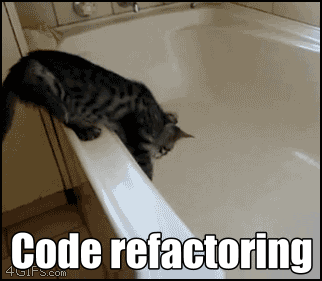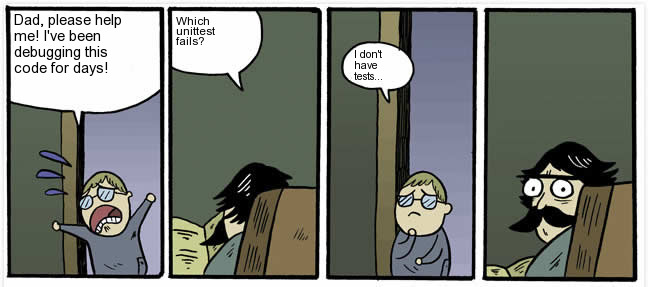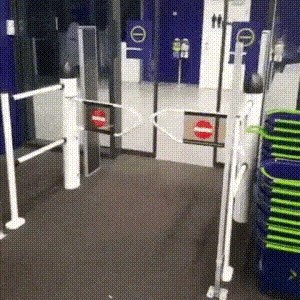TDD 101
Workshop

Silvia Mur
Elena García
Index
-
Why do we need tests? -
Types of tests -
What is TDD? -
TDD life cycle -
The anatomy of a test -
Unit testing in JavaScript -
Let's start coding!
Why do we need tests?
Tests help deliver code with quality


Tests ease maintenance
How do I know that with my code I didn't break anything?


Oh, there is a bug, something is not working properly

Tests ease maintenance
Tests are live documentation

Types of tests
Functional testing types
- Unit testing
- Integration testing
- System testing
- Sanity testing
- Smoke testing
- Interface testing
- Regression testing
- Beta/Acceptance testing
Non-functional testing types
- Performance testing
- Load testing
- Stress testing
- Security testing
- Compatibility testing
- Install testing
- Recovery testing
- Reliability testing
- Usability testing
- ...
There are multiple ways on how you can test software

Functional testing
scope vs price

What is TDD?
Test driven development (TDD) is a software development approach in which a test is written before writing the code. Once the new code passes the test, it is refactored to an acceptable standard.

TDD Benefits
- Your code is tested
- No time spent in debugging
- Bugs are caught in early stages of development
- You need to fully understand the functional requirements. Tests are based on business logic
- Happy path, edge cases
- You design what you need
- Loose coupling design. Your code is testable

TDD Downs
- Learning TDD is a journey that involves a lot of practice
- Hard to apply to existing legacy code


but... in the mid term is really beneficial
Demistifying TDD
We do not have time to do TDD
TDD does not require more time than "normal" programming
We do not have time to do TDD
I have awesome tests because I do TDD
TDD is not black magic: you have also to learn how to write good unit tests
I have awesome tests because I do TDD
My test coverage is 100% because I do TDD
Test coverage does not need to be 100% with TDD
My test coverage is 100% because I do TDD
The architecture of my application is a result of doing TDD
Doing TDD does not mean that you don't have to worry about analysis and architecture design.
The architecture of my application is a result of doing TDD
TDD life cycle

Law 1
You are not allowed to write any production code unless it is to make a failing unit test pass
Law 2
You are not allowed to write any more of a unit test than is sufficient to fail; and compilation failures are failures
Law 3
You are not allowed to write any more production code than is sufficient to pass the one failing unit test
Write enough code to pass the test
describe('sum function', () => {
test('adds 1 + 2 to equal 3', () => {
expect(sum(1, 2).toBe(3));
});
});function sum () {
return 3;
}describe('sum function', () => {
test('adds 1 + 2 to equal 3', () => {
expect(sum(1, 2).toBe(3));
});
test('adds 2 + 2 to equal 4', () => {
expect(sum(2, 2).toBe(4));
});
});
function sum (a, b) {
return a + b;
}
The anatomy
of a test

1. Setup
2. Execution
3. Assert
0. Description
1. Setup
2. Execution
3. Assert
0. Description
1. Assert
2. Execution
3. Setup
Description
It's used to create a sentence for the test
describe('Hermione casts the Alohomora spell', () => {
it('opens the door in front of her', () => {
...
})
})Assert
It checks that the action was performed correctly
(check that either the return value of a function or the state of an object are as expected)
describe('Hermione casts the Alohomora spell', () => {
it('unlocks the door in front of her', () => {
// assert
expect(door.status).toBe('unlocked')
})
})Execution
(Act)
It performs the action that we are testing on the unit
describe('Hermione casts the Alohomora spell', () => {
it('unlocks the door in front of her', () => {
// execute
Hermione.cast('Alohomora', door)
// assert
expect(door.status).toBe('unlocks')
})
})Setup
(Arrange)
It's used to get everything ready to perform the test
(declaring variables, building required objects or setting the state based
on the circumstances we want to test)
describe('Hermione casts the Alohomora spell', () => {
it('unlocks the door in front of her', () => {
// setup
const door = { status: 'locked' }
// execute
Hermione.cast('Alohomora', door)
// assert
expect(door.status).toBe('unlocked')
})
})Unit testing in JavaScript
-
Libraries
- Mocking/stubbing
- Assertion
- Test runners
- Testing frameworks

Sinon.JS





Jasmine
Libraries
Test runners
Testing frameworks


Karma
Jest
QUnit
Jest (Delightful JavaScript Testing)
- Installation
-
yarn add jest --dev
-
npm install jest --save-dev
-
- Configuration
-
jest --init
-
- Run through npm scripts
-
yarn test
-
npm test
-
Example
function sum (a, b) {
return a + b;
}
describe('sum function', () => {
test('adds 1 + 2 to equal 3', () => {
expect(sum(1, 2).toBe(3));
});
});Matchers
-
toBe
-
toBeNull
-
toBeUndefined
-
toBeTruthy
-
toBeFalsy
-
toEqual
-
toBeGreaterThan
-
toBeLessThan
-
toMatch
-
toMatchObject
-
toContain
-
not
- ...
Let's start coding!
We have two katas
- Password validator (~1h)
- Mars Rover (~2h)
We will do
ping-pong pair programming


Write failing test
Write code that makes it pass
Write failing test
Write code that makes it pass
REFACTOR